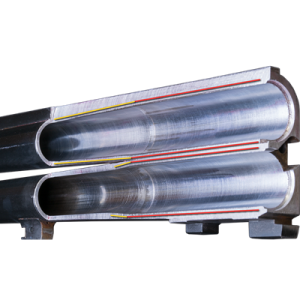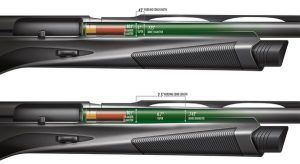Analyzing the Functionality of Shotgun Barrel Forcing Cones
The functioning and performance of a shotgun largely depend on a variety of factors and components, but one that often gets overlooked is the forcing cone. This key feature of the shotgun barrel plays a significant role in the gun’s operation and has a profound effect on the performance of the shotgun. This article aims to delve into the function, design, and effects of shotgun barrel forcing cones, along with debunking a few myths about them.
Understanding the Role of Shotgun Barrel Forcing Cones
The forcing cone is an integral component of a shotgun’s barrel, serving a crucial role in the firearm’s operation. Essentially, the forcing cone is an extended, tapering section of the barrel that leads the shot charge from the chamber to the bore. This transition area, located just ahead of the chamber, helps guide the shot charge from the relatively larger chamber into the narrower bore. The primary function of the forcing cone is to ease the transition of the shot charge, which can improve the performance and longevity of the shotgun.

The forcing cone is particularly important because the transition from the chamber to the bore involves a significant reduction in diameter. Without a properly designed forcing cone, the shot charge would abruptly move from the wide chamber to the narrow bore, which could cause damage to the shotgun and negatively affect the shot’s pattern. The forcing cone’s gradual taper helps to prevent these issues by smoothing out the transition and reducing the pressure on the shot charge.
Typically, the length of the forcing cone can significantly influence the functioning of the shotgun. Longer forcing cones provide a more gradual transition for the shot charge, which can improve the gun’s performance and reduce recoil. However, the length of the forcing cone can vary depending on the specific shotgun and the manufacturer’s design preferences.
Material and Design of Shotgun Barrel Forcing Cones
The material and design of shotgun barrel forcing cones can significantly impact the shotgun’s performance. Forcing cones are typically made from the same material as the rest of the shotgun barrel, often high-quality steel. The material needs to be durable and resilient to withstand the intense pressures and forces generated when firing a shotgun.
The design of the forcing cone is crucial to its function. Forcing cones can be relatively short, around a half-inch long, or considerably longer, up to several inches. The longer the forcing cone, the more gradual the transition from the chamber to the bore, which can enhance the performance of the shotgun and reduce wear and tear. However, a longer forcing cone can also increase the cost and complexity of the shotgun’s construction.
In terms of shape, forcing cones are usually cone-shaped, with the broader end at the chamber and the narrower end at the bore. However, some manufacturers use a stepped design, with several gradual reductions in diameter instead of a single smooth taper. The exact design of the forcing cone depends on the manufacturer’s preferences and the specific requirements of the shotgun.

The Impact of Forcing Cones on Shotgun Performance
The forcing cone can have a significant impact on the performance of a shotgun. A well-designed and properly functioning forcing cone can enhance the accuracy and consistency of the shotgun’s shot pattern. This is because the gradual transition provided by the forcing cone prevents the shot charge from being overly compressed, which can distort the shot pattern.
Furthermore, a longer forcing cone can reduce recoil, making the shotgun more comfortable to shoot. The gradual transition from the chamber to the bore reduces the abruptness of the pressure change, which can lower the felt recoil. This can make the shotgun easier to handle and increase the shooter’s accuracy.
However, the effect of the forcing cone on the shotgun’s performance can be subtle and may not be noticed by all shooters. The improvement in performance can also depend on other factors, such as the type of ammunition used and the shooter’s skill level.
Debunking Myths about Shotgun Barrel Forcing Cones
There are some common myths and misconceptions about shotgun barrel forcing cones that can cloud understanding and influence purchase decisions. One popular myth is that longer forcing cones always improve shotgun performance. While longer forcing cones can provide a more gradual transition and potentially improve performance, the benefits can be subtle and may not justify the additional cost for all shooters.
Another commonly held belief is that forcing cones need regular maintenance or replacement. In reality, forcing cones are made from durable materials and designed to last the lifetime of the shotgun. While it is essential to clean and maintain your shotgun properly, the forcing cone typically does not require any special attention beyond standard cleaning practices.
Lastly, some might believe that all shotguns have the same forcing cone design. However, the design and length of the forcing cone can vary significantly between different shotguns and manufacturers. This variation can affect the shotgun’s performance and should be considered when purchasing a new shotgun.
In conclusion, the shotgun barrel forcing cone is a critical component that influences the performance and durability of the shotgun. While its effects may be subtle and often overlooked, understanding its function, design, and impact on performance can help shooters make informed decisions about their firearms. Dispelling common myths about forcing cones can also aid in this understanding and contribute to responsible and informed firearm ownership.
# # #


Comments